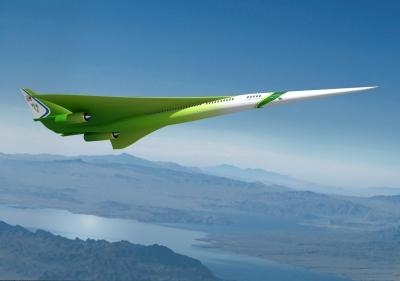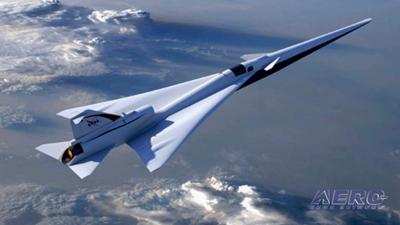Considers Amendment To Part 36 To Broaden Its Applicability
The FAA plans to propose an update to its rules governing supersonic flight over the U.S. in light of developments in SST technology.

In a notice posted on the FAA website, the agency says the proposal would update and add to the noise certification rules in 14 CFR part 36, subparts A, D, and O to accommodate noise certification of new supersonic aircraft. Currently, 14 CFR part 36, Noise Standards: Aircraft Type and Airworthiness Certification does not apply to supersonic aircraft other than the Concorde. The agency says Part 36 needs to be amended to broaden its applicability, provide definitions, and adopt noise levels and test requirements that would apply to new design supersonic aircraft.
The FAA is initiating two rulemaking activities on civil supersonic aircraft noise. The first activity is a proposed rule for noise certification of supersonic aircraft, and the second is a proposed rule to streamline and clarify the procedures to obtain special flight authorization for conducting supersonic flight-testing in the United States. The subsonic noise certification regulations of 14 CFR part 36 do not apply to supersonic aircraft. The current rulemaking activity related to noise certification of supersonic aircraft will determine the technological and economic basis that supports noise level requirements that are appropriate for supersonic aircraft.
The publication of proposed rules will depend on the ongoing data and information gathering process being conducted. This is necessary in order for the FAA to fulfill its obligations under 49 U.S. Code (USC) 44715. The FAA anticipates issuing proposed rules in 2019. Notices of proposed rulemaking will be published in the Federal Register for public review and comment.

Considerations of the impact of sonic booms from supersonic flight preceded the development of the Concorde aircraft. The Aircraft Noise Abatement Act of 1968 directed the FAA, after consultation with the Department of Transportation, to “prescribe and amend standards for the measurement of aircraft noise and sonic boom,” and, “… such rules and regulations as the (administrator of the FAA) may find necessary to provide for the control and abatement of aircraft noise and sonic boom.” In 1970, acting under this authority, the FAA proposed a regulation that would restrict operation of civil aircraft at speeds greater than Mach 1, unless authorized by the FAA. The regulation was finalized with minor changes on Mar. 28, 1973 and codified at (now)14 Code of Federal Regulations (CFR) 91.817 and Appendix B to Part 91.
The FAA’s existing restrictions can be found at 14 CFR Part 91.817. In essence, that regulation prohibits anyone from operating a civil aircraft at a true flight Mach number greater than 1 over land in the United States and from a certain distance off shore where a boom could reach U.S. shores. There is a procedure that allows supersonic operation under certain conditions granted on an individual basis. In addition, any new aircraft would need to meet current airworthiness and noise certification requirements.
The two supersonic rulemaking activities would not rescind the prohibition of flight in excess of Mach 1 over land. At the same time, the FAA is working within the existing statutory and regulatory authority to consider the range of permissible supersonic operations. In addition, FAA is assessing the current state of supersonic aircraft technology in terms of mitigating the noise impacts associated with supersonic overland flight.
(Source: FAA. Images from file)
 ANN's Daily Aero-Linx (05.02.24)
ANN's Daily Aero-Linx (05.02.24) ANN's Daily Aero-Term (05.02.24): Touchdown Zone Lighting
ANN's Daily Aero-Term (05.02.24): Touchdown Zone Lighting Aero-News: Quote of the Day (05.02.24)
Aero-News: Quote of the Day (05.02.24) ANN FAQ: Contributing To Aero-TV
ANN FAQ: Contributing To Aero-TV NTSB Final Report: Cirrus Design Corp SR20
NTSB Final Report: Cirrus Design Corp SR20




